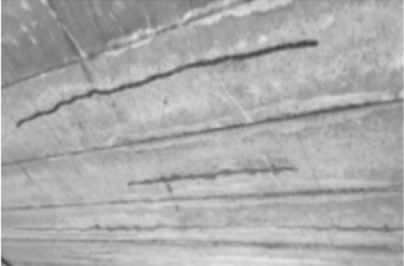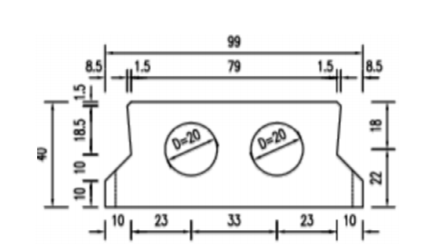Girder Bridge
Steel Plate Reinforcement Method
Adopting the method of sticking steel plate reinforcement can well improve the bearing capacity of small-span bridges and meet the current design specifications and actual operating load requirements.
Project Overview
A certain expressway was opened to traffic at the end of 2001. The above-mentioned 97 "standards", 85 and 89 "standards" are adopted. For the small-span hollow slab beam on the expressway, some longitudinal cracks and other diseases appeared at the bottom of the beam, as shown in Figure 1.

The upper structure of the bridge is a 3m*10m pre-stressed concrete hollow slab beam, and the lower structure is a double-pillar pier and U-shaped platform. See Figure 2 for the elevation of the bridge and Figure 3 for the section of the hollow slab beam.

Bridge elevation

10m hollow slab beam section view
Preventive maintenance program
According to the calculated bearing capacity and effect value, the amount of steel plate required in the longitudinal direction of the small slab girder bridge is further calculated. Adhesive steel at the bottom of the plate is used for reinforcement. The plan is: each side beam is pasted with two steel plates with a width of 250mm and a thickness of 5mm, and each middle beam is pasted with two steel plates with a width of 200mm and a thickness of 5mm.
Construction technology and control points of bonded steel reinforcement

Conclusion
(1) Adopting preventive maintenance measures such as sticking steel plates can improve the bearing capacity of small-span bridges and meet the current design specifications and actual operating load requirements.
(2) The process of controlling the sticking of steel is very important. During the construction process of sticking the steel plate, the chiseling of the beam bottom plate, the surface grinding of the steel plate, the planting of steel bars and the effect of sticking steel (hollowness) are very important.
(3) The pull-out test on the bonded steel is an important indicator to test the effect of the bonded steel, and cohesive failure should be formed. Through this bridge test, the positive tension bond strength of steel plate and concrete is greater than 2.5MPa, and it is cohesive failure.
(4) For the section with insufficient shear resistance at the beam end, shear reinforcement should also be carried out to improve the shear resistance.